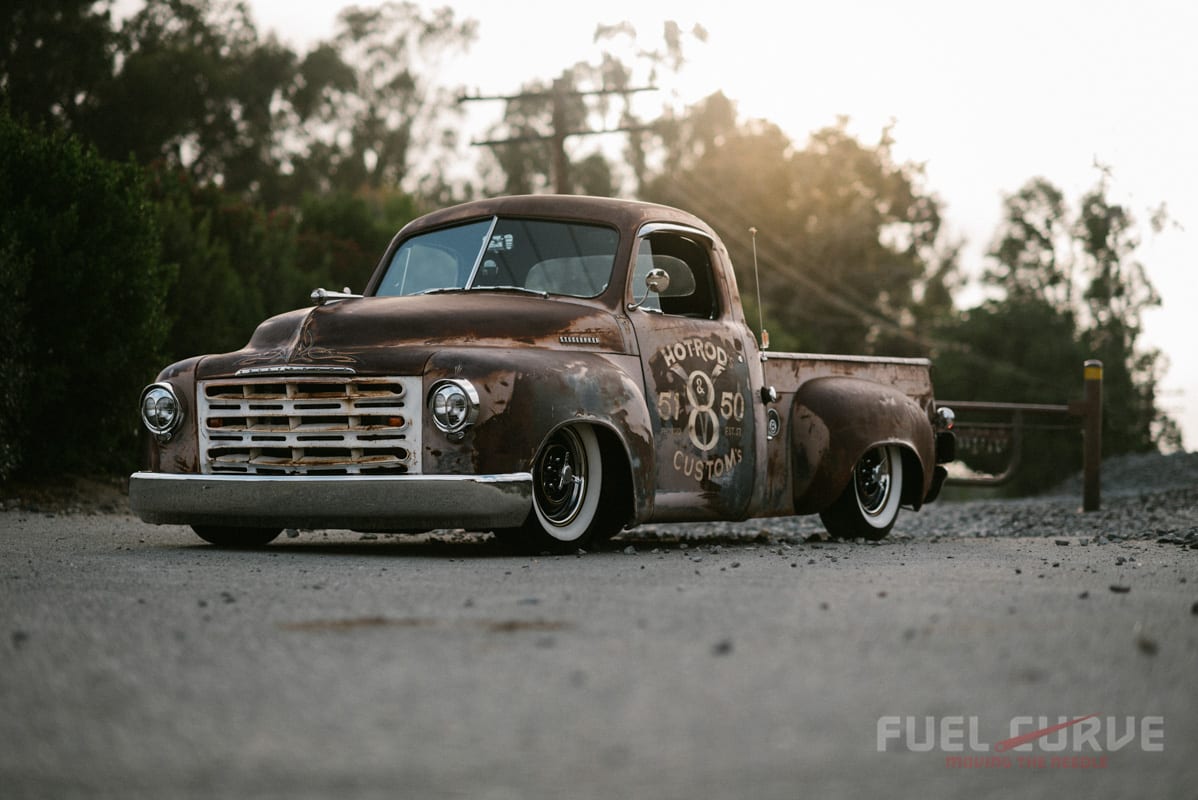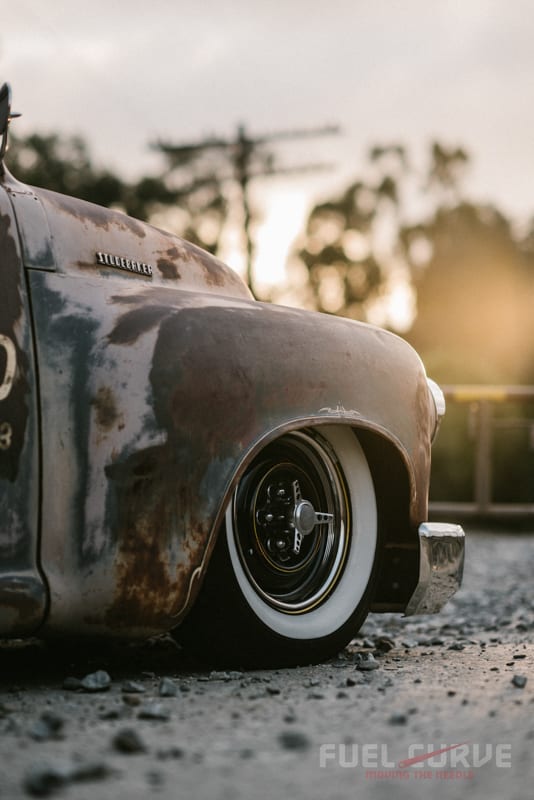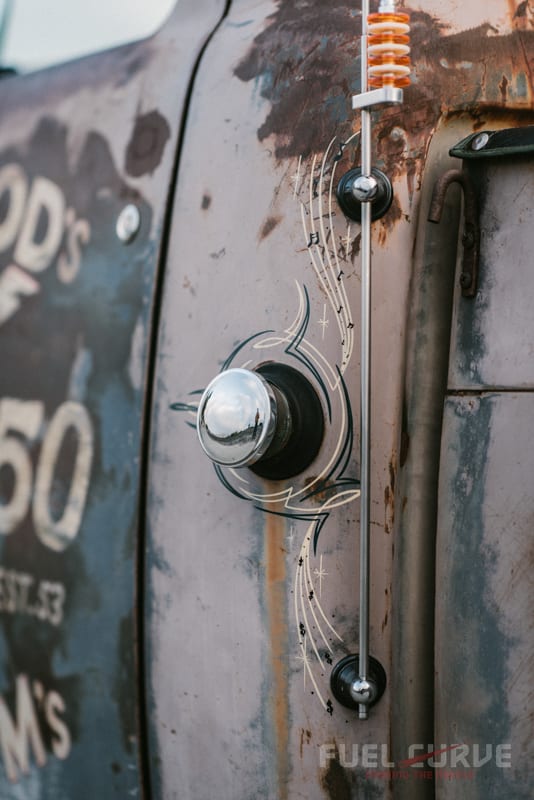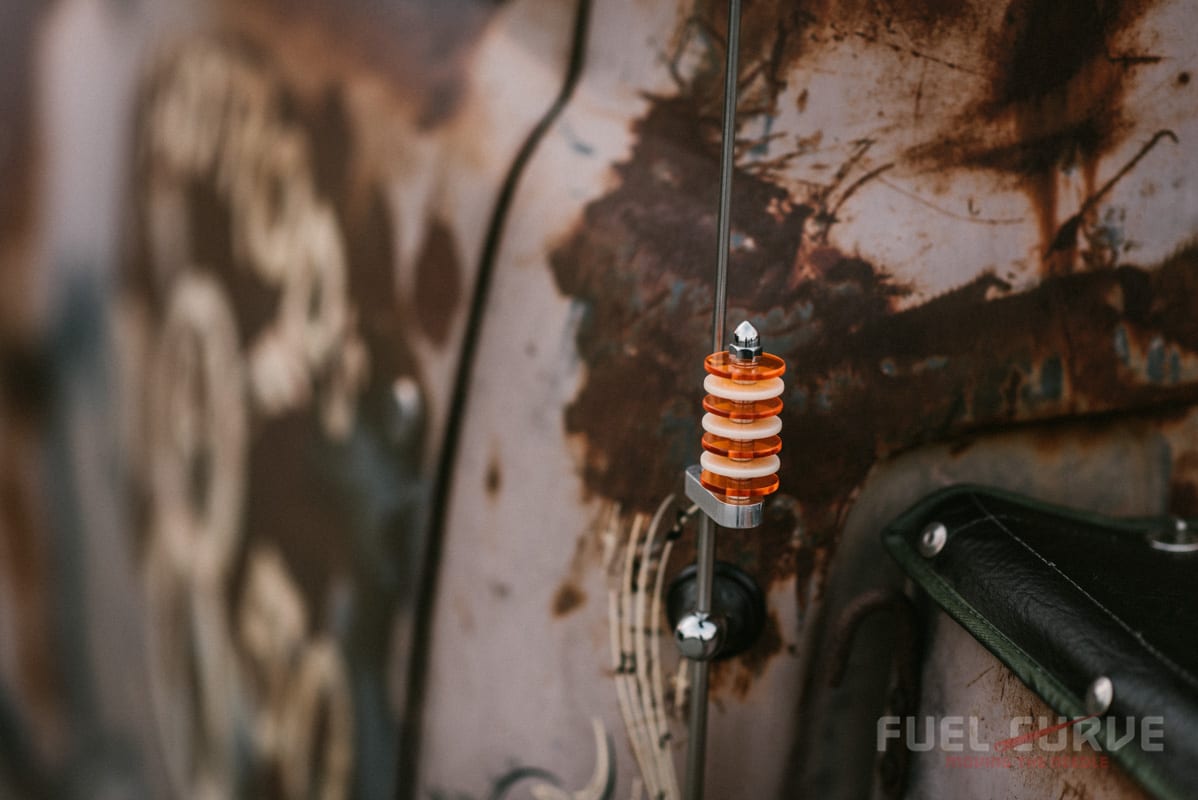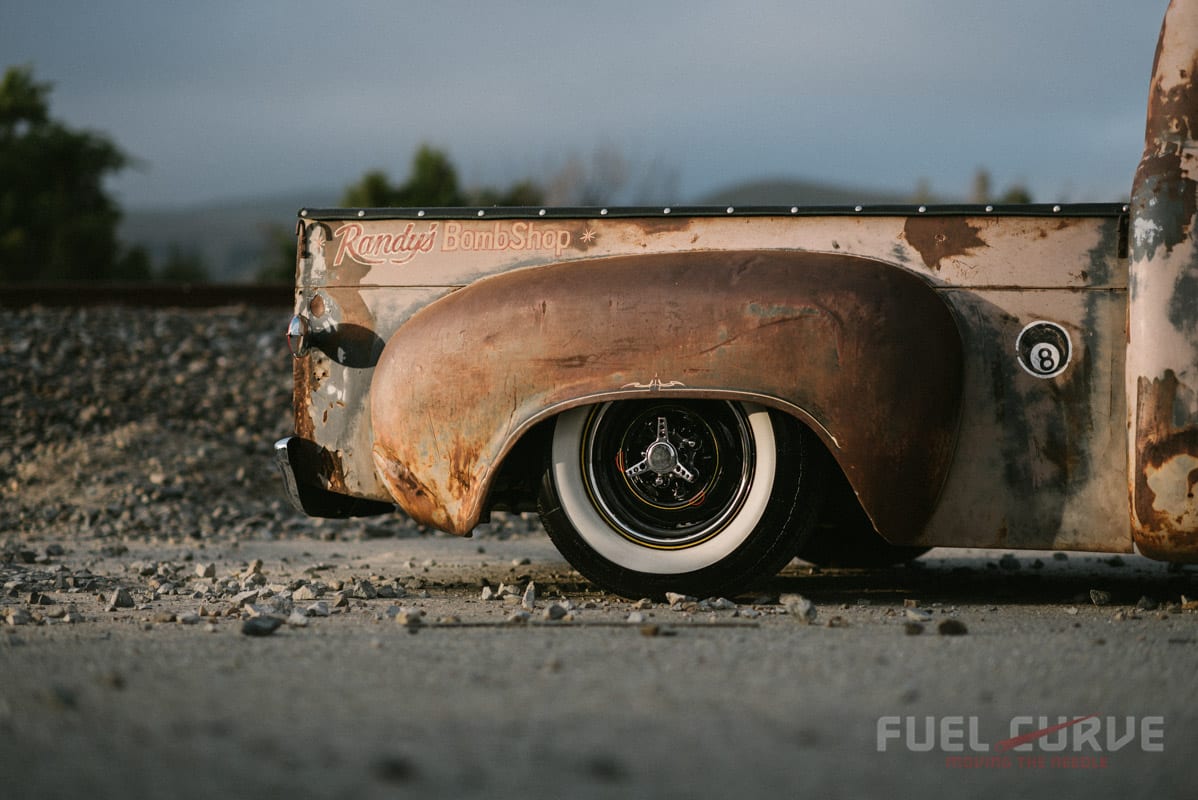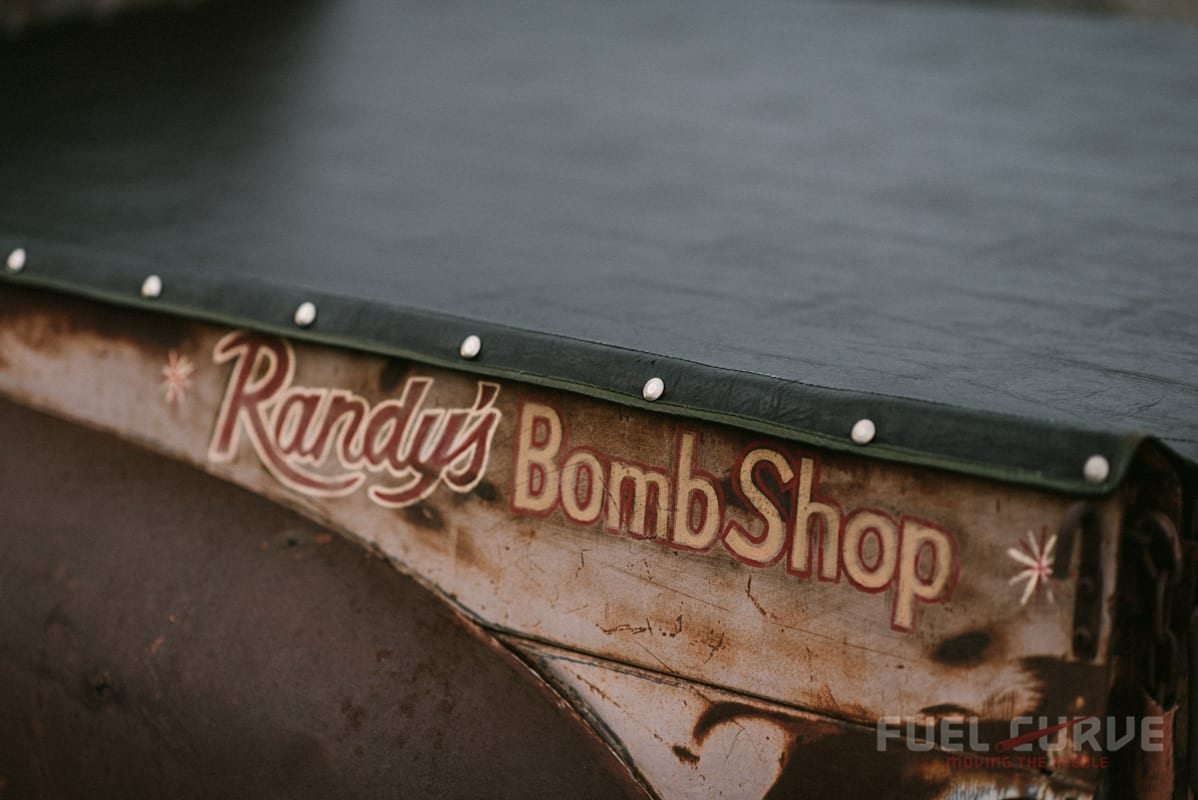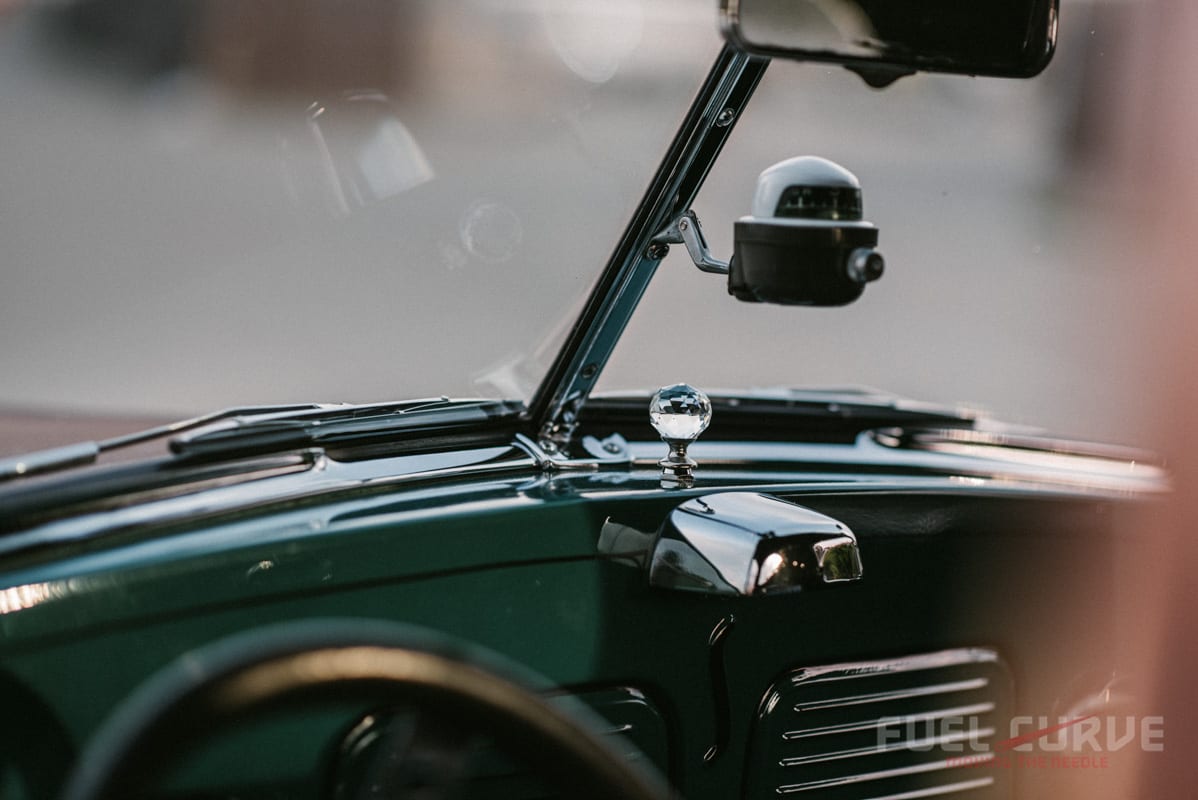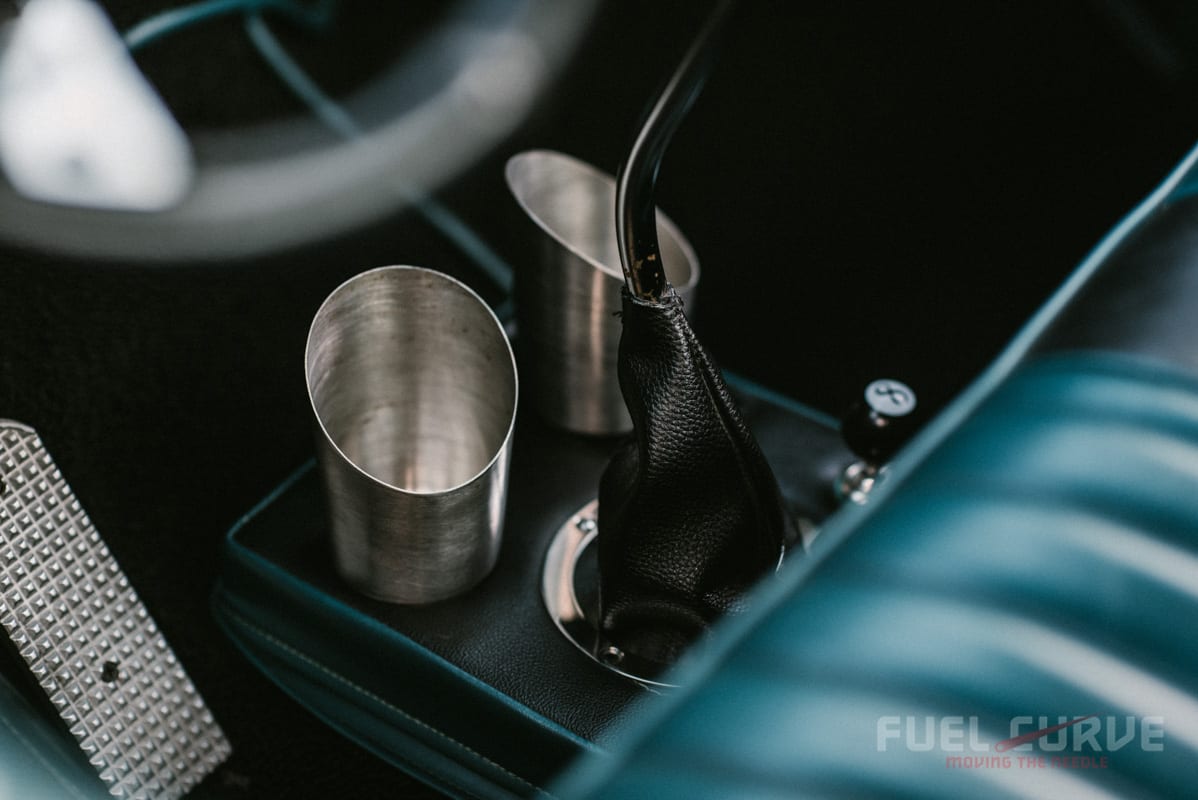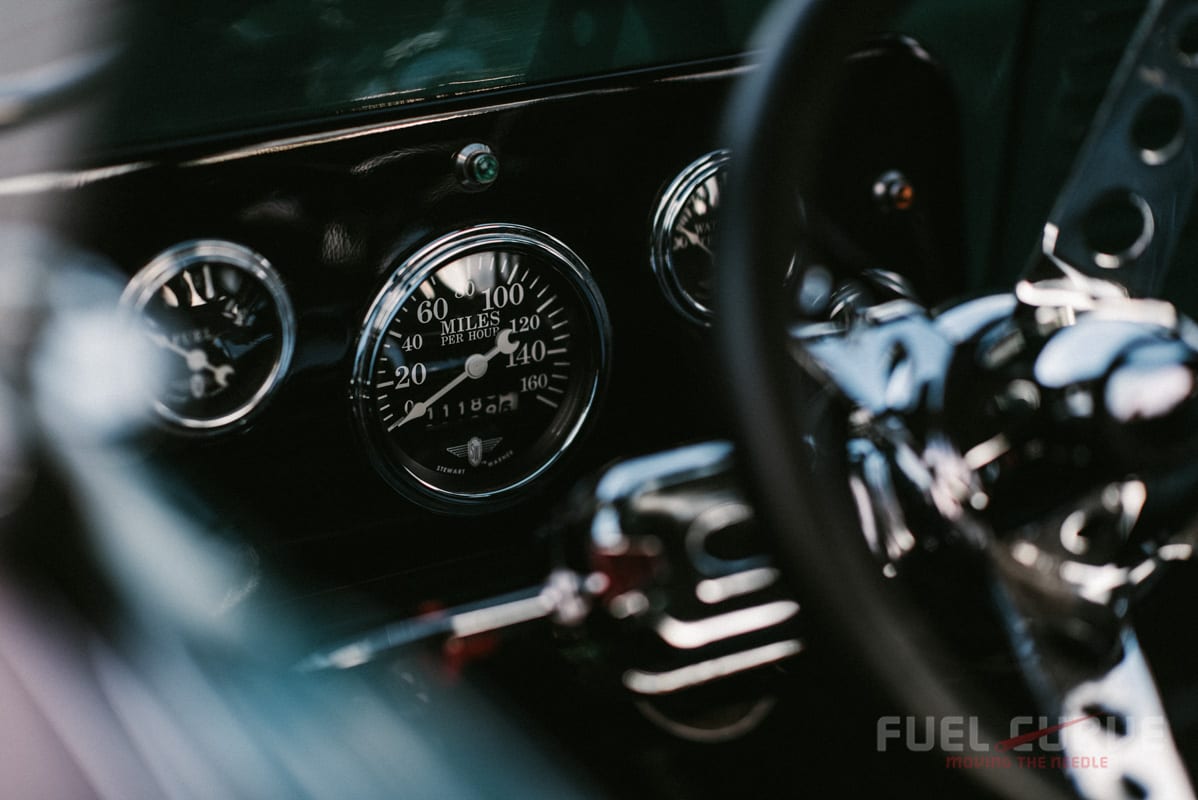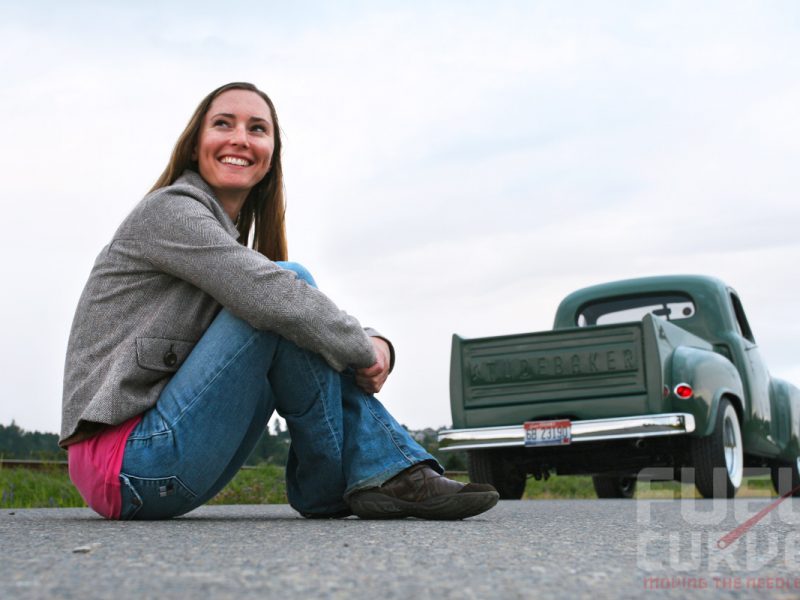El Rusto Natural – Randy Perez’s 1949 Studebaker 2-R5 Pickup
If patina is nature’s artistic medium, Randy’s 1949 Studebaker 2-R5 Pickup is a canvas on which lives a masterpiece. If you recall the last time we visited Randy, it was to place a spotlight on his Model T hot rod. This time, we’re driving down another avenue of popular classics, and focusing on the most inherently American vehicle there is: the pickup truck.

Studebaker is a name that is rich in history, yet ultimately rather tragic. It began its manufacturing career in February of 1852, operating as a small blacksmith shop. Though it made its debut in the world as a wagon builder, it went on to produce everything from economy cars and sport coupes, to COE business haulers, to military vehicles during World War II. The vehicle manufacturer eventually built its success in gas-powered vehicle sales, landing a spot as the third largest American auto manufacturer at one point. Sadly, we all know now that Studebaker met its fate after faltering until the late 1960s, when it finally closed its doors for good.
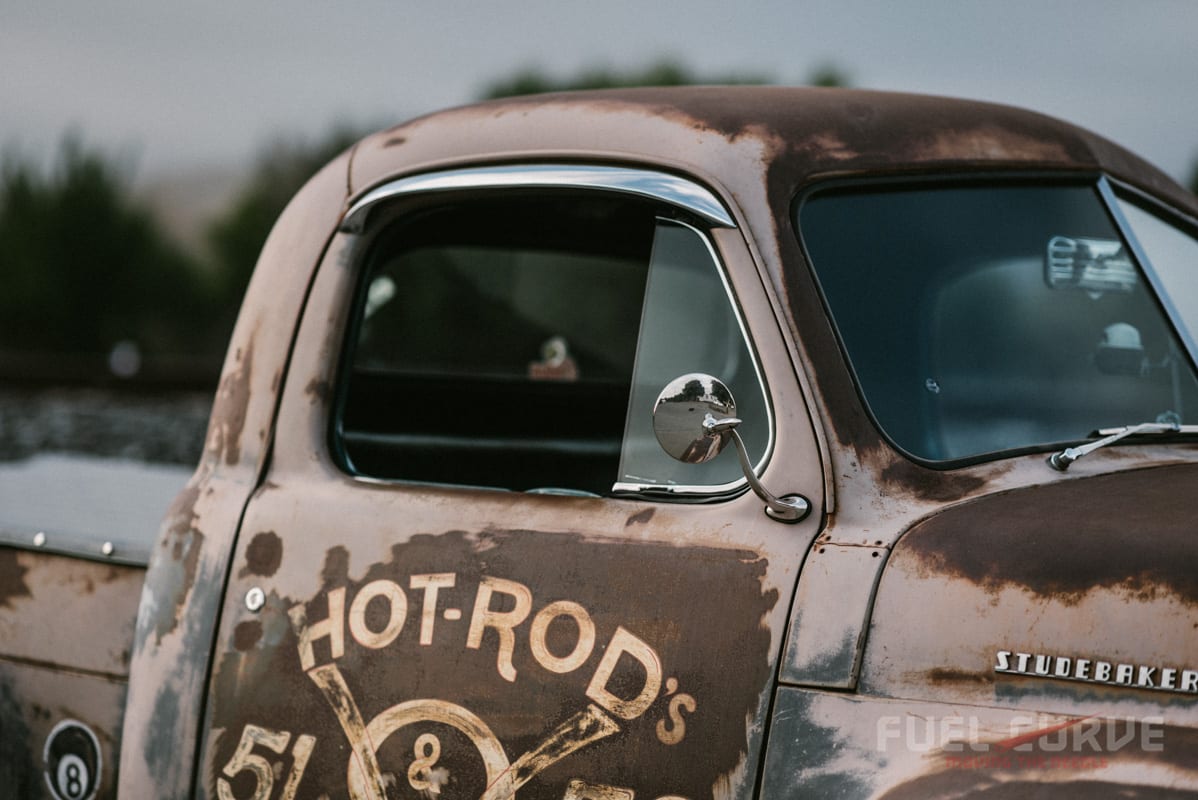

While Studebaker itself may be long gone, a small but dedicated community of fanatics still exists. Randy, having owned three Studebakers over the years, is one of them. He first encountered this 1949 Studebaker 2-R5 Pickup back in 2013 at a DeadEnd Magazine cruise night, where he bumped into his friend who owned it. Joe, the truck’s previous owner had just finished it and was enjoying the fruits of his labor. Randy happened to be smitten immediately and told Joe that if the truck was ever sold, it had to be to him. One short year later, that request turned into reality, when Randy once again found his friend at another cruise night.
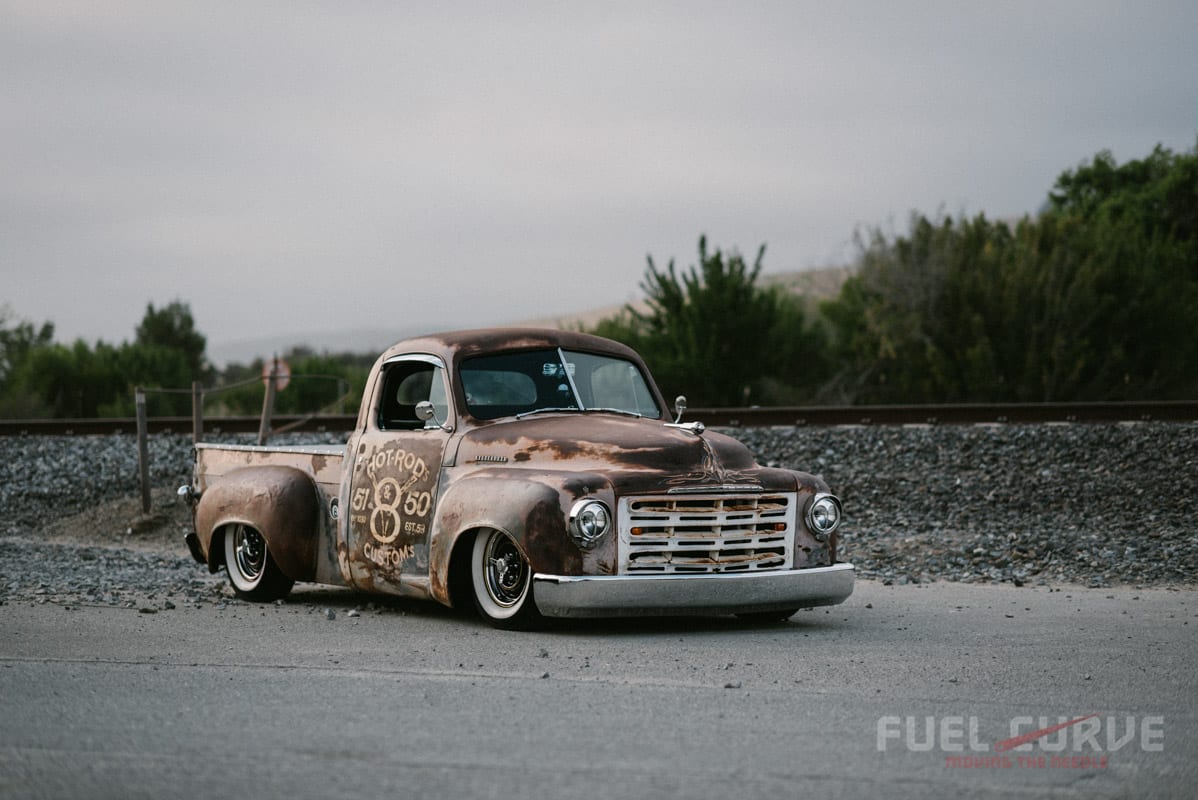
The truck you see here has been carefully crafted with a whole lot of cosmetic TLC from worldly elements, aside from the pin striping. It was originally found neglected, left to die mothballed in a field. That said, it’s pretty obvious where the moniker El Rusto Natural comes from, and why it makes so much sense.

“I have always liked the patina look on old cars—long before it got to be as popular as it is now,” Randy explained. The trend of “forced” patina, or faux patina, seems to be growing, but it will never replace what true patina looks like. This truck however, looks as though it got special treatment from the weather. There is just the right amount of roughness and texture in all the right places—scratches, scrapes, small cracks here and there, heavily textured surface patina, and swirling patterns come together to create a beautiful landscape.
“It took Mother Nature 69 years to create this finish; you can’t replicate that” Randy said. The other interesting fact here is that out of all of Randy’s cars (most of which are restored or in great cosmetic shape), the Studebaker gets the most attention because of its patina.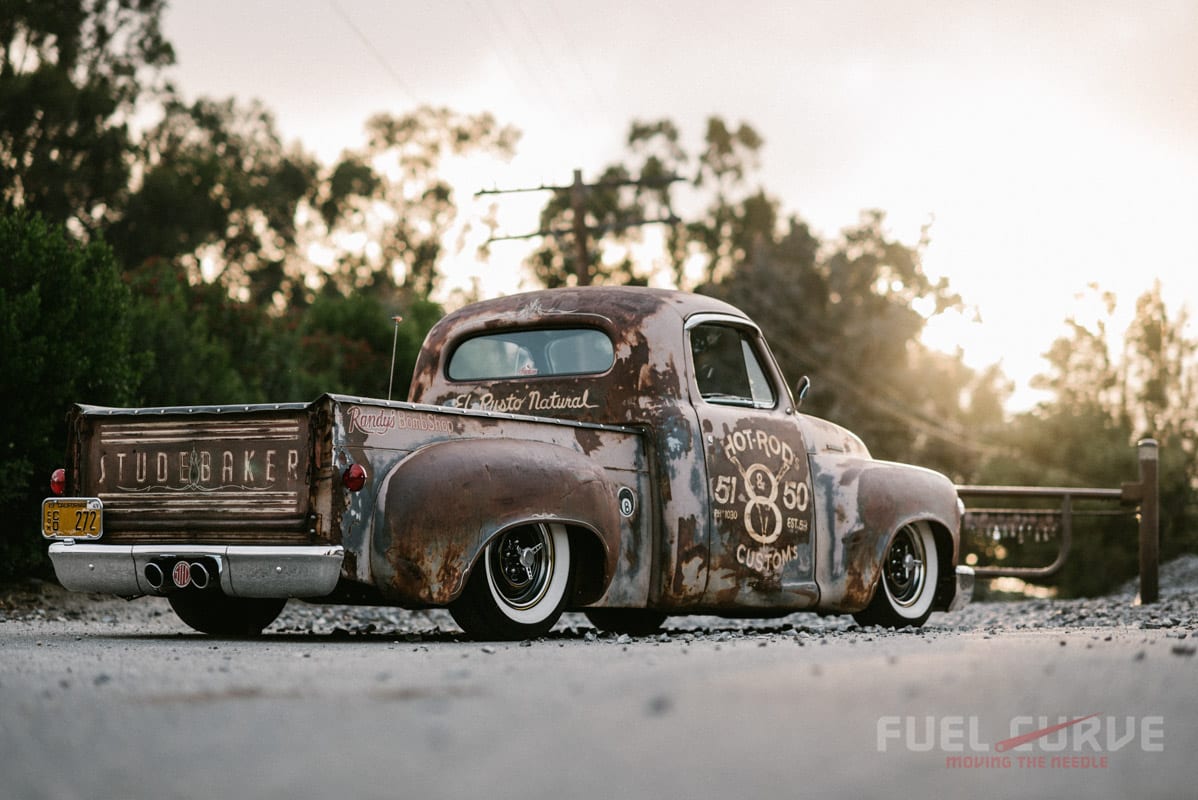
“I wish I had a nickel for every time someone asked me, ‘Is it finished?’ or, ‘What color are you going to paint it?’”
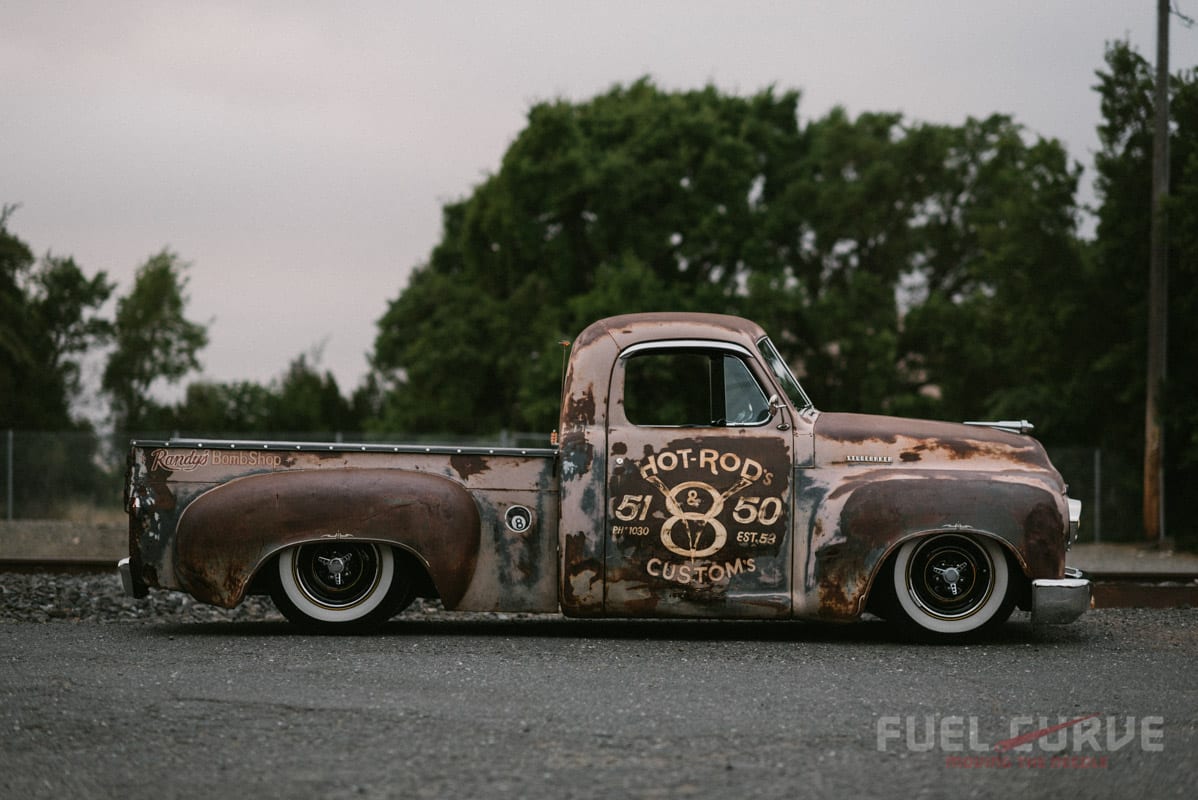
The eventual goal for this truck is to be cross-country ready so that Randy can take it on rallies and enjoy it all over America. The pickup is outfitted with Chevy running gear, all coming from a 1976 Camaro donor. Powered by a 350c.i. V8 paired with an auto trans, it has the perfect balance of reliability and classic lines. The 15” wheels are wrapped in Coker Classic White Walls, and the early 70s spider caps with three-hole knockoffs really tie the look together. (Hint: the holes match the steering wheel perfectly.)
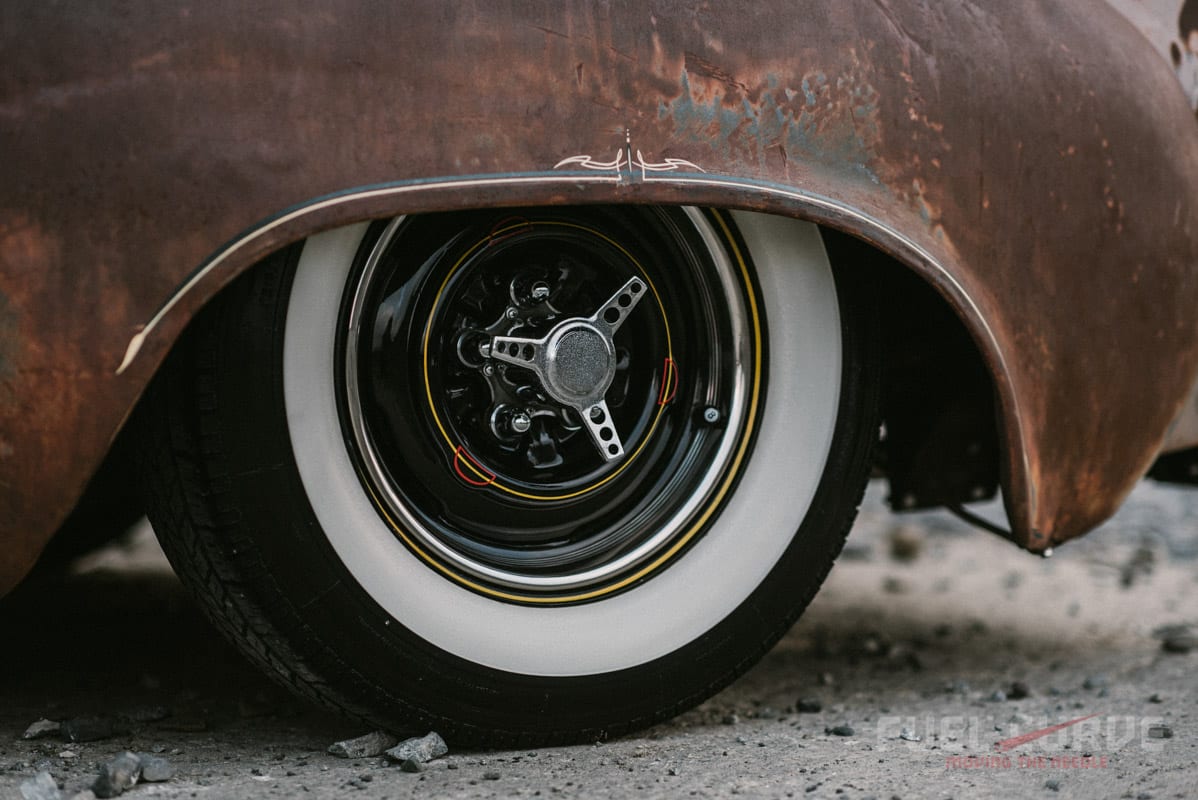
The body itself is entirely stock but is decorated with a 1990s Chevy CK truck front bumper, and a rear bumper from a 1970 Chevy. Randy had that bumper narrowed to 14 inches to better fit the Studebaker, and it flows wonderfully with the chassis. The exhaust has also been rerouted to its custom location as a center exit at the back of the truck, accompanied by the made-from-scratch trailer hitch. (Randy has both a Studebaker bed trailer and a ’55 Airstream “Bubble” travel trailer that he tows.)
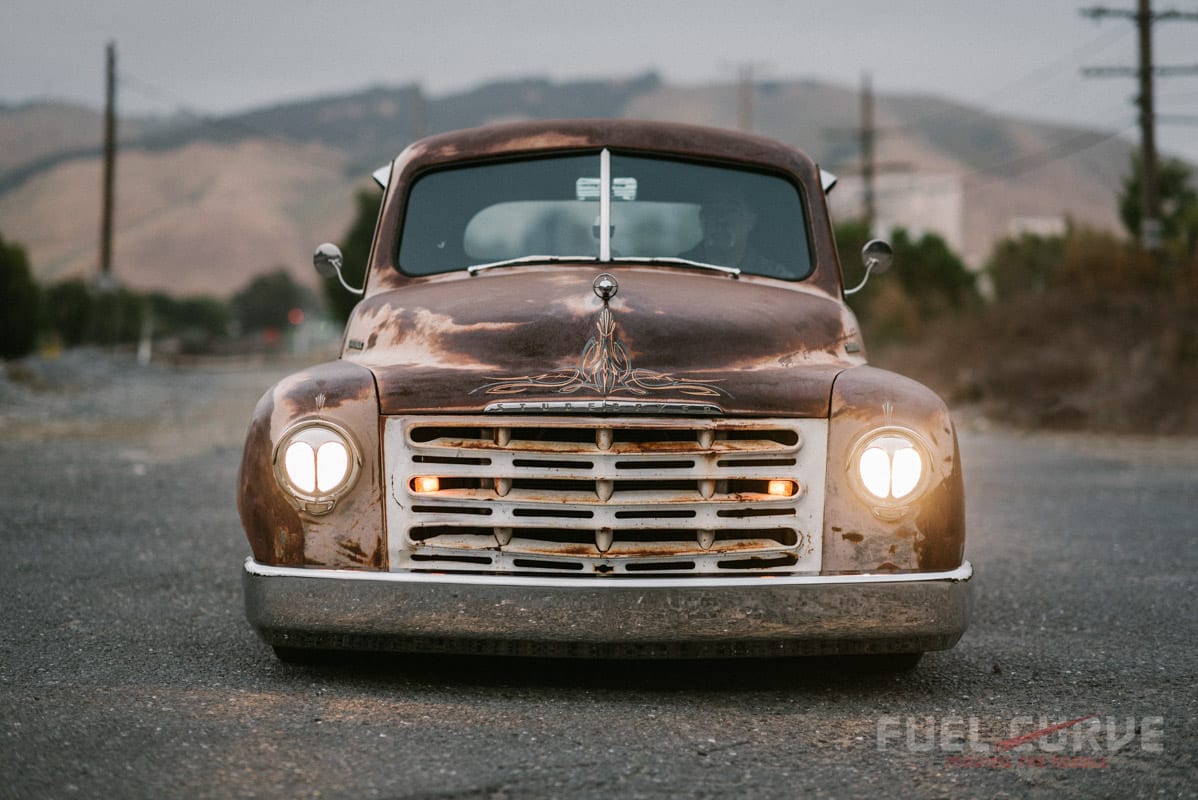
Inside the cab, you’re met with a blast of clean lines, the perfect amount of “bling,” and an unexpected color wave of Aqua Green—a factory color option from Studebaker in the 1950s. A few details you’ll notice include the 10-inch, four spoke 70s Grant steering wheel, an eight ball shift knob, and a Kenwood stereo with 6×9 speakers. The bench seat came from an S10 pickup, and was reupholstered by Julian’s Upholstery in Anderson, CA. We appreciate the continuity here, as it also matches that Aqua Green color palette. Other small details like the cup holders (to which our first question was: “Are those exhaust tips?”), period-correct windshield mounted compass, and Stewart Warner wing gauges create a clean, well coordinated atmosphere inside. We absolutely love the juxtaposition of the restored, resto-modded interior against the natural, weather-worn exterior.
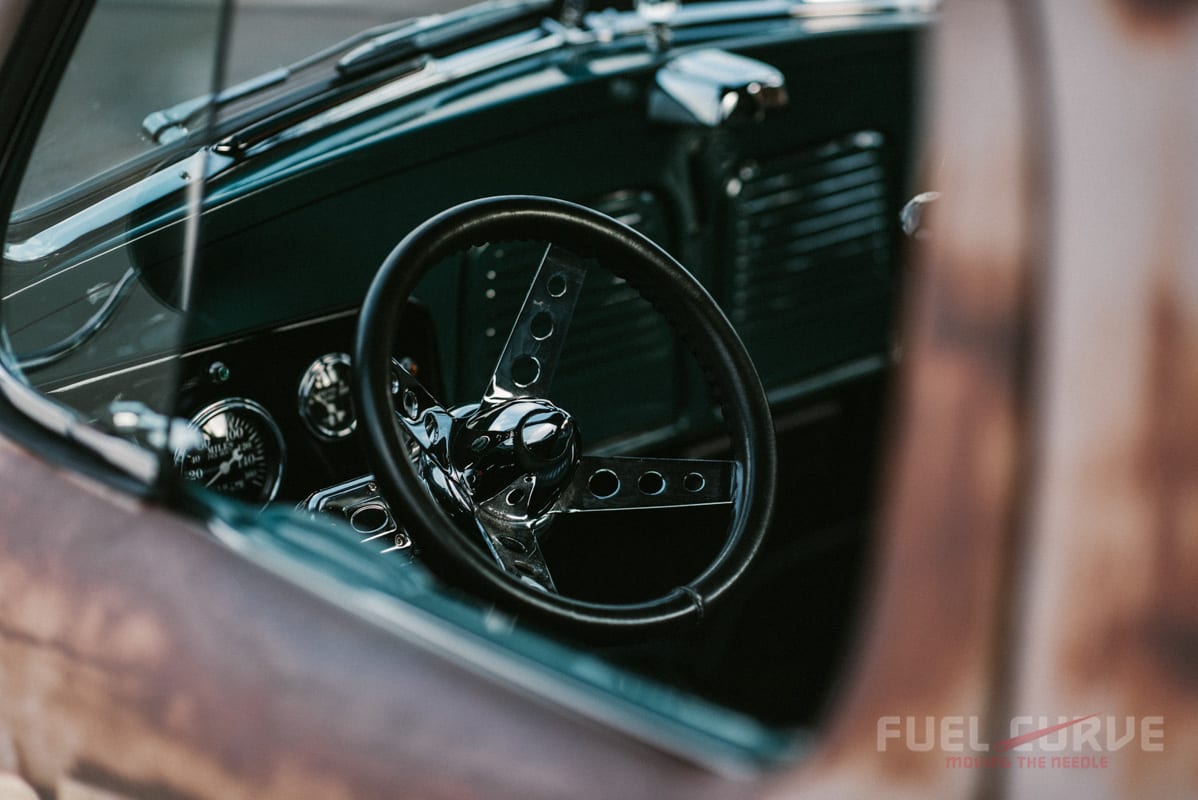
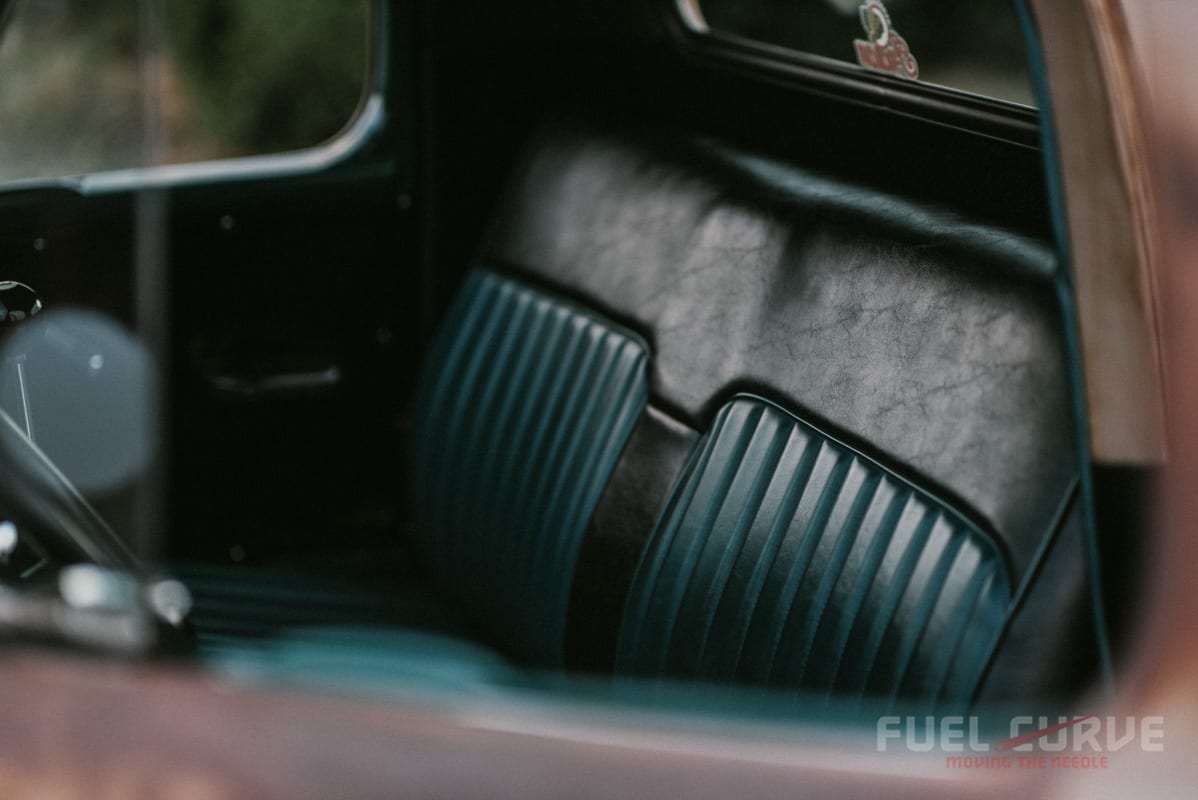
When it comes to trucks, Randy much prefers the designs from Studebaker over those of The Big Three. In his eyes, Studebaker was far ahead of their time when it came to styling. “To me, these Studebaker 2-R5 C cab pickups look like Chevy trucks that have been customized,” he pointed out. “The top looks chopped, the cab looks sectioned, the hood looks pancaked, the bed looks smoother, and the rear fenders look custom.” He certainly has a point here, as the truck does look like it’s been custom built. It seems that Studebaker was just that good at what they did.

One last point that we need to touch on is the pin striping. It cannot be missed and it cannot be under-appreciated—it’s absolutely magnificent and is the crown jewel of the build. The majority of the striping was done by Tom Cat in Redding, CA, and is done in a classic 1950’s style. Even the little music notes found on the sides of the cab are correct to the era. The signage, such as the 51/50, the eight ball logos at the bed, and El Rusto Natural was done by Patrick Walstrip, also in Redding. What seems to work so well about all of the striping and signage is that it’s very obviously modern, but has been artfully “aged” and distressed to match the natural patina of the truck. This kind of work is an art form that can only be completed by someone with true talent.
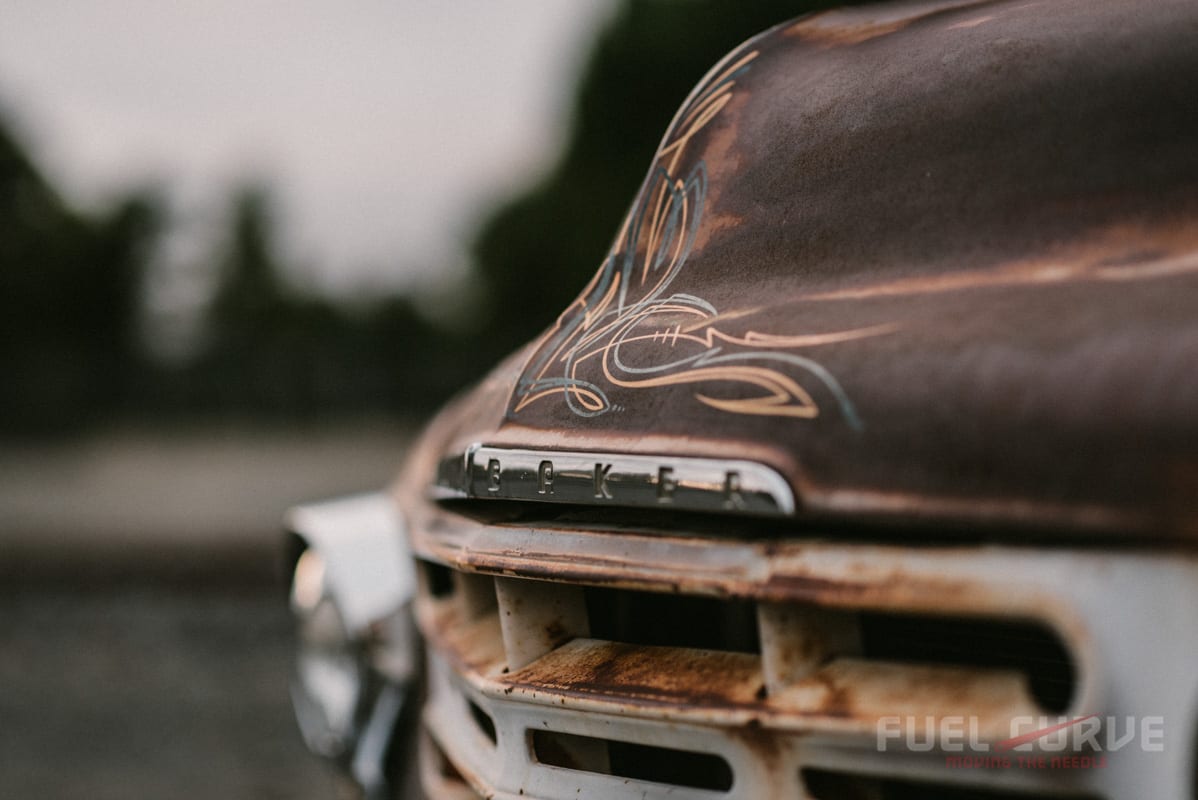
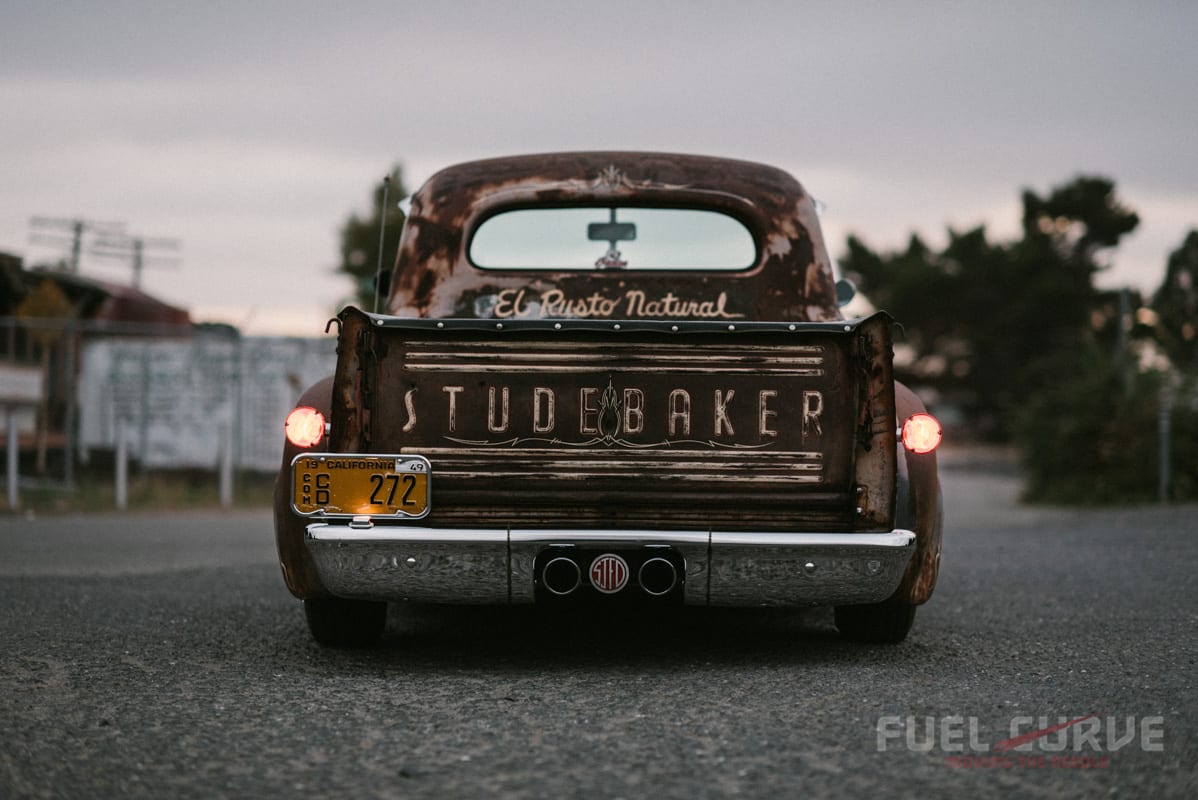

While the Studebaker community may be small, Randy enjoys it because everyone in it is wildly dedicated to it. The numbers pale in comparison to those of Chevy or Ford enthusiasts, but Randy says that the availability of aftermarket parts and accessories for the marque is surprisingly vast. The Chevy running gear is also an obvious convenience. This means that whether he’s towing his Airstream trailer for a weekend getaway, or cruising up, down, or out of the state, he’s bound to have a good time not worrying about whether or not he can perform a quick fix if necessary. So, enjoy the ride, Randy—we can’t wait to see this truck trek across the country.

